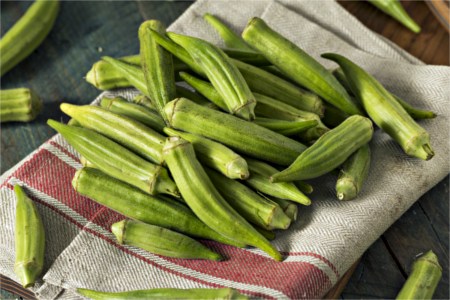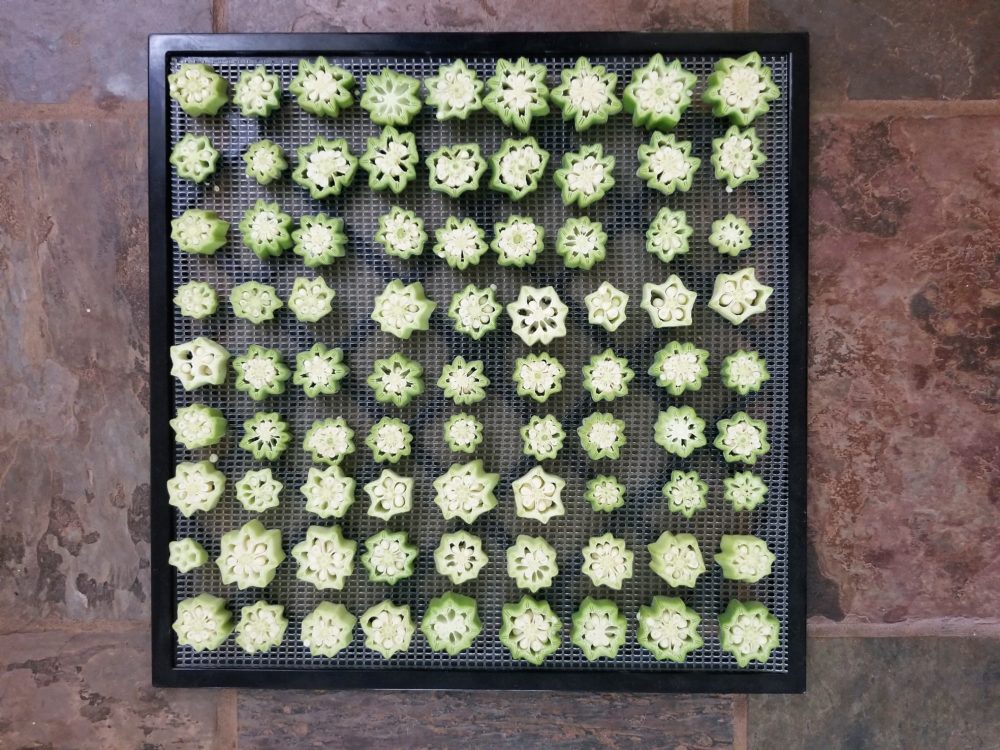
The pods make an excellent thickener for soups and stews, like gumbo.Okra has a rich history and important culture.The plant’s stem is fibrous and can be used to make cordage or paper.this practice was used in the south during the Civil War. The seeds can also be roasted and ground and used as a caffeine free, coffee substitute. In the U.S.Okra seeds can be pressed and make a wonderful oil for cooking.The leaves are also edible and are often likened to beet or dandelion greens.
 Okra can easily be preserved for winter by making pickled okra. It certainly is a plant worthy of the attention. Though it does well in hot climates and will tolerate drought, okra performs best in rich, moist soil.Ī resurgence of interest in local food and regional recipes has led to a renewed interest in okra. It’s a member of the mallow family, related to plans like hibiscus, cotton, and hollyhock. Okra was first brought to the Carribean and Southern United States by the slave trade sometime in the 1600s. Records of its cultivation in ancient Egypt date to over 3000 years ago! In the following centuries was spread throughout Africa, the Middle East, and Asia. The slime results in an acquired mouth feel, which is why most chefs soak okra in a water and vinegar mixture before cooking.Like many long cultivated plants, okra’s origins cannot be pinpointed but many historians believe it was first cultivated in Ethiopia. It secretes a slimy mucus that acts as a natural thickening agent, making it ideal for dishes such as gumbo. The fruit has a crunchy texture when it is sautéed but becomes tender when it is cooked. Okra can be stir-fried, stewed, blanched or boiled and is a staple in Southern, Caribbean and Indian cuisines. It has a mild, grassy flavour that is comparable to eggplant or green beans.Īlthough okra is considered a type of fruit, it is treated as a vegetable when used in cooking. The fruit is known for its long slender shape and is firm to the touch. Younger pods have white seeds that change to black as the plant matures. Most okra is mid to dark green in colour except for Red Burgundy. Clemson’s Spineless grows between 7-10cm in length but other varieties can reach up to 17cm. There are many different varieties of okra, but Clemson’s Spineless and dark green are the most commonly grown across Australia. After the first harvest, the lower leaves of the plant should be removed by hand or with scissors. If the stems are too difficult to cut, the pod is too old to consume and should be discarded. To remove the pods from the plant, the stem should be cut above the cap with a sharp knife. When removing the pods, it is important to wear protective clothing and gloves as most varieties are covered in spines that can irritate the skin. The seed pods are typically harvested after about two months or once they have reached 5-6cm in length. Plants need to be watered and fertilised throughout the growth process for optimum yield. Seeds must be placed 2cm deep in warm soil with 15cm between each planting.ĭuring the early stages, a 5-6cm layer of mulch should be applied to prevent weeds from growing.
Okra can easily be preserved for winter by making pickled okra. It certainly is a plant worthy of the attention. Though it does well in hot climates and will tolerate drought, okra performs best in rich, moist soil.Ī resurgence of interest in local food and regional recipes has led to a renewed interest in okra. It’s a member of the mallow family, related to plans like hibiscus, cotton, and hollyhock. Okra was first brought to the Carribean and Southern United States by the slave trade sometime in the 1600s. Records of its cultivation in ancient Egypt date to over 3000 years ago! In the following centuries was spread throughout Africa, the Middle East, and Asia. The slime results in an acquired mouth feel, which is why most chefs soak okra in a water and vinegar mixture before cooking.Like many long cultivated plants, okra’s origins cannot be pinpointed but many historians believe it was first cultivated in Ethiopia. It secretes a slimy mucus that acts as a natural thickening agent, making it ideal for dishes such as gumbo. The fruit has a crunchy texture when it is sautéed but becomes tender when it is cooked. Okra can be stir-fried, stewed, blanched or boiled and is a staple in Southern, Caribbean and Indian cuisines. It has a mild, grassy flavour that is comparable to eggplant or green beans.Īlthough okra is considered a type of fruit, it is treated as a vegetable when used in cooking. The fruit is known for its long slender shape and is firm to the touch. Younger pods have white seeds that change to black as the plant matures. Most okra is mid to dark green in colour except for Red Burgundy. Clemson’s Spineless grows between 7-10cm in length but other varieties can reach up to 17cm. There are many different varieties of okra, but Clemson’s Spineless and dark green are the most commonly grown across Australia. After the first harvest, the lower leaves of the plant should be removed by hand or with scissors. If the stems are too difficult to cut, the pod is too old to consume and should be discarded. To remove the pods from the plant, the stem should be cut above the cap with a sharp knife. When removing the pods, it is important to wear protective clothing and gloves as most varieties are covered in spines that can irritate the skin. The seed pods are typically harvested after about two months or once they have reached 5-6cm in length. Plants need to be watered and fertilised throughout the growth process for optimum yield. Seeds must be placed 2cm deep in warm soil with 15cm between each planting.ĭuring the early stages, a 5-6cm layer of mulch should be applied to prevent weeds from growing. 
It is recommended seeds are soaked overnight in tepid water before planting to promote germination.
Okra origin full#
The plants are perennials, but are usually cultivated annually and require full sun. Okra grows best in hot and humid climates and is at its peak during the summer months. In Australia, okra is grown mainly in the Northern Territory, Queensland and Western Australia, with other states producing smaller volumes. Although the geographical origin of okra is disputed, it is believed to have roots around Ethiopia where it can be traced as far back as the 12 th century BC where it was cultivated by Egyptians.Īlso known as lady’s fingers, okra is grown across Asia, Africa, South America, Africa and the Middle East.

Okra or Abelmoschus esculentus is an ornamental plant that is considered part of the Malvaceae family which includes cacao, durian and hibiscus.







 0 kommentar(er)
0 kommentar(er)
